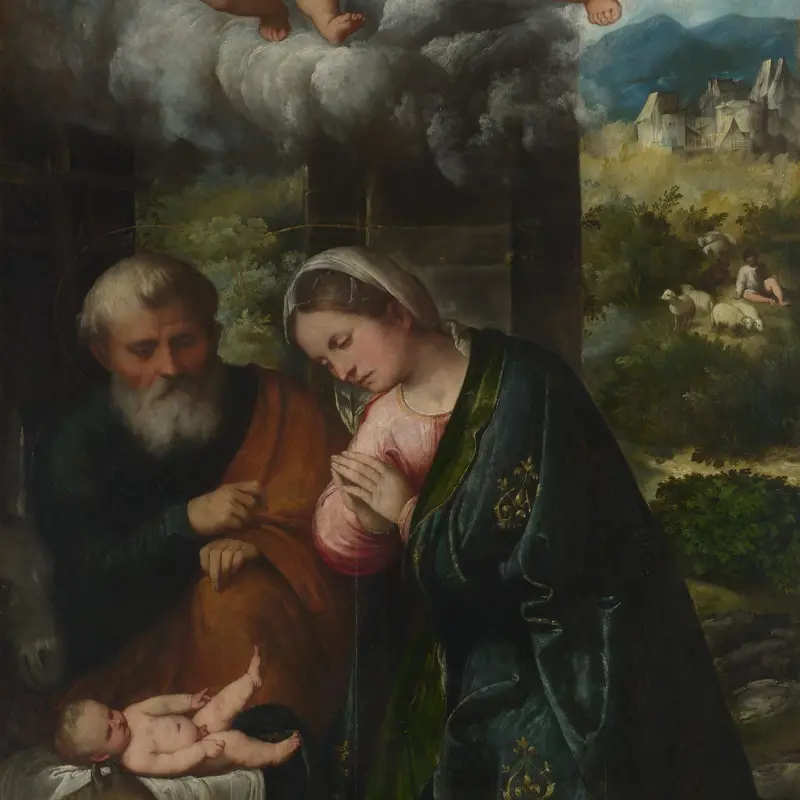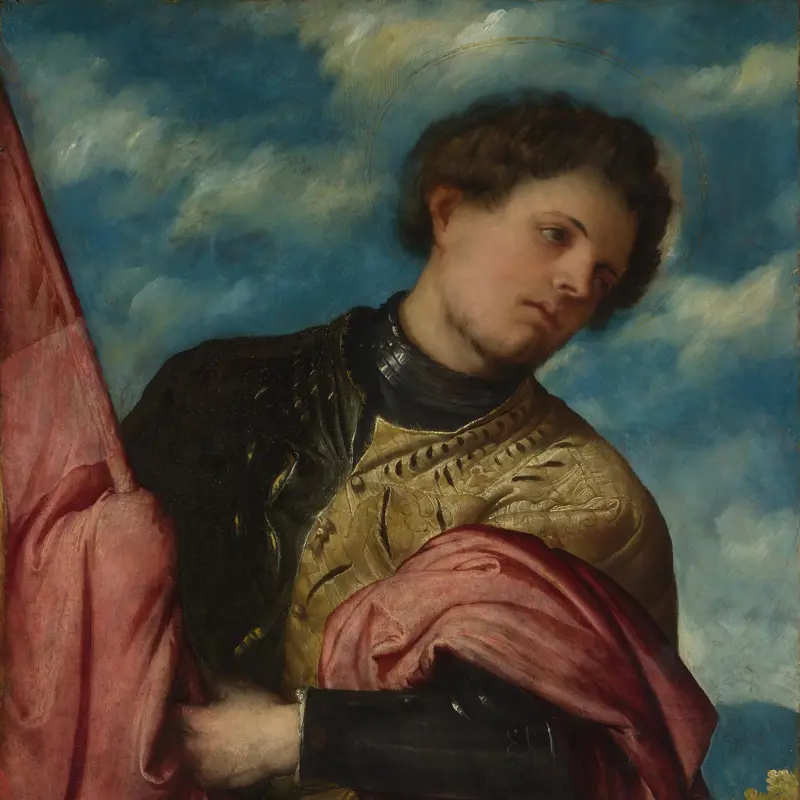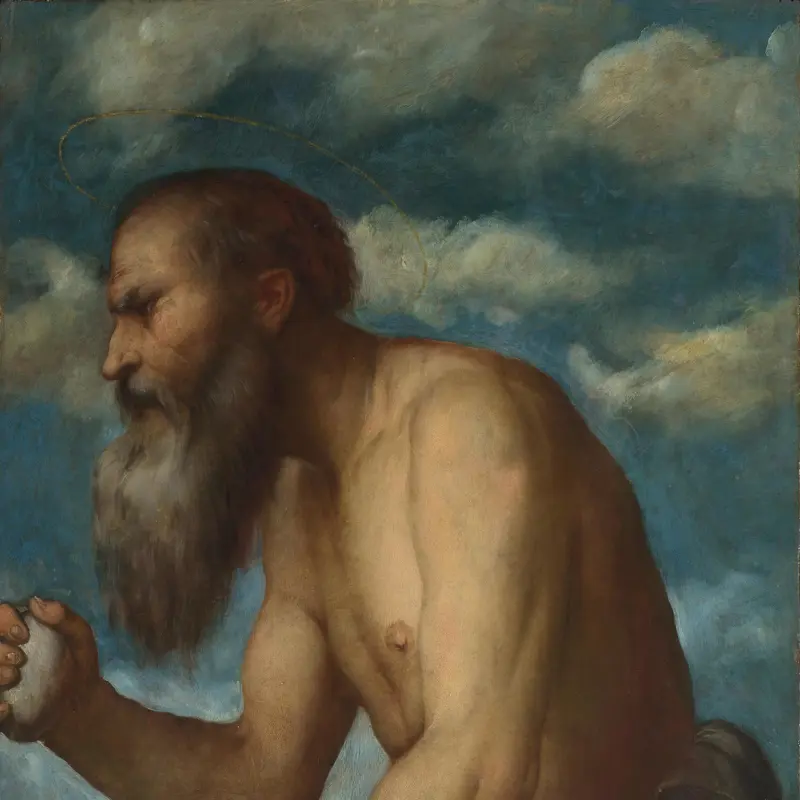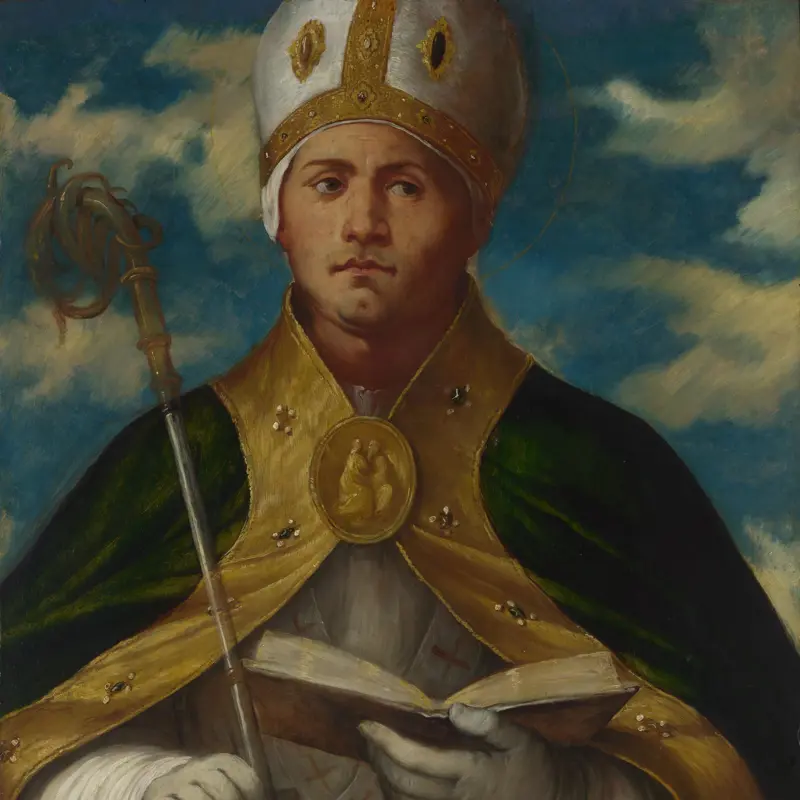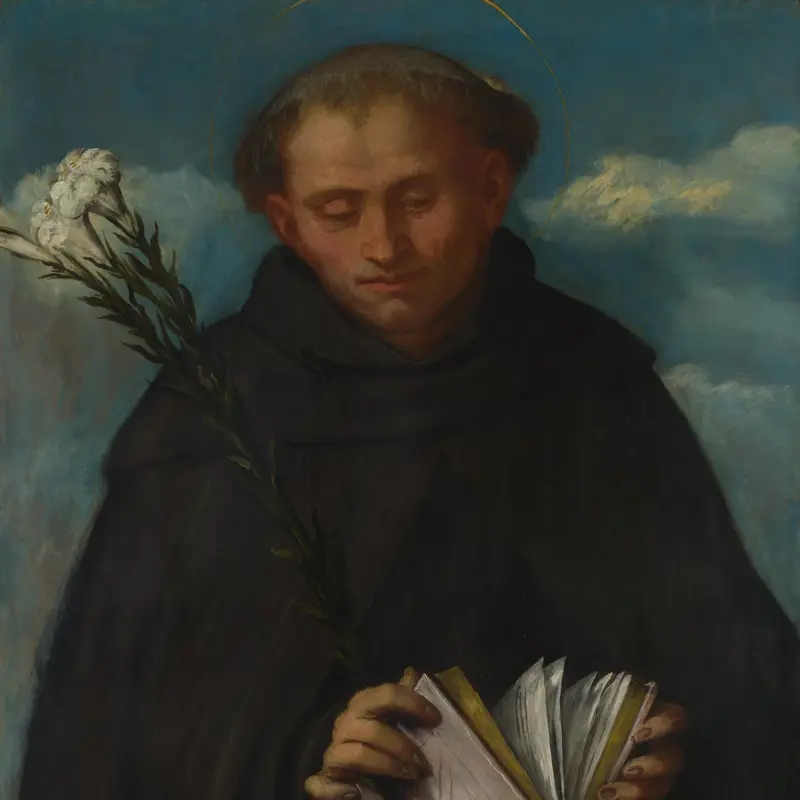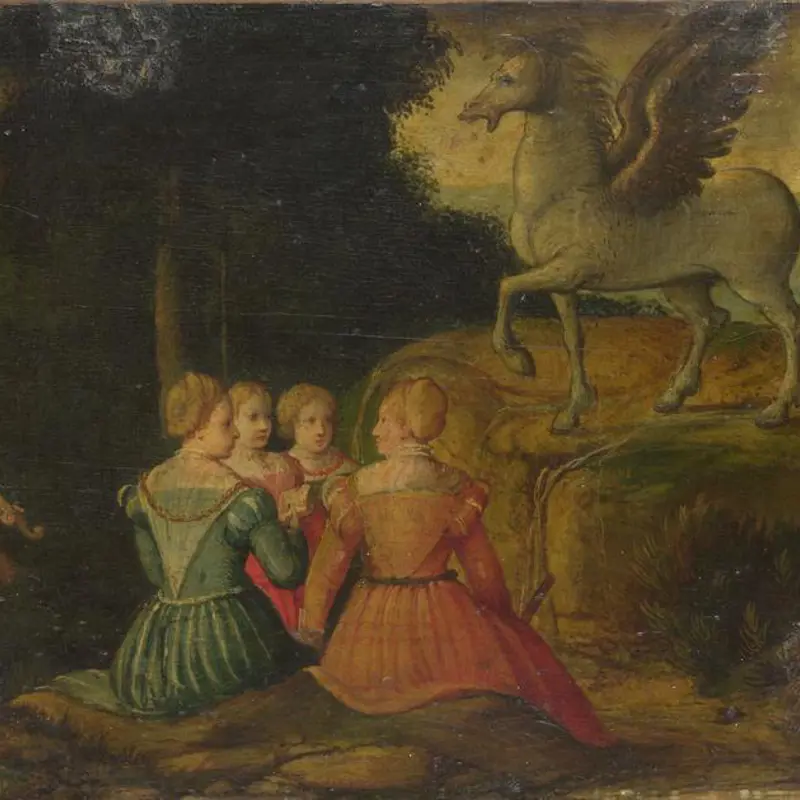Girolamo Romanino, 'Saint Filippo Benizzi', about 1524
About the work
Overview
This painting is part of Romanino’s high altarpiece for S. Alessandro in Brescia. It depicts Saint Filippo Benizzi and is situated to the right of an image of the Nativity, above a panel of Saint Jerome.
Saint Filippo Benizzi (1233–1285) was born in Florence. He became fifth general of the Order of the Servants of Mary (the Servite Order) and its chief propagator and organiser. The Servites were devoted to preaching the Gospel and encouraging devotion to the Virgin Mary. Saint Filippo Benizzi was beatified by Pope Leo X in 1516 and made a saint by Pope Clement X in 1671.
The church for which this altarpiece was made belonged to the Servite Order. Saint Filippo Benizzi is shown wearing the black scapular, tunic and cowl of the Servite Order and holding a lily, which is echoed in the crosier held by Saint Gaudioso, who appears opposite him.
Key facts
Details
- Full title
- Saint Filippo Benizzi
- Artist
- Girolamo Romanino
- Artist dates
- About 1484 - about 1560
- Part of the group
- High Altarpiece, S. Alessandro, Brescia
- Date made
- About 1524
- Medium and support
- Oil on wood (probably poplar)
- Dimensions
- 74.2 × 64.9 cm
- Acquisition credit
- Bought, 1857
- Inventory number
- NG297.5
- Location
- Not on display
- Collection
- Main Collection
- Frame
- 19th-century Italian Frame
Provenance
Additional information
Text extracted from the ‘Provenance’ section of the catalogue entry in Nicholas Penny, ‘National Gallery Catalogues: The Sixteenth Century Italian Paintings’, vol. 1, ‘Paintings from Bergamo, Brescia and Cremona’, London 2004; for further information, see the full catalogue entry.
Bibliography
-
1962Gould, Cecil, National Gallery Catalogues: The Sixteenth Century Italian Schools (excluding the Venetian), London 1962
-
1987Gould, Cecil, National Gallery Catalogues: The Sixteenth Century Italian Schools, London 1987
-
2001
C. Baker and T. Henry, The National Gallery: Complete Illustrated Catalogue, London 2001
-
2004
Penny, Nicholas, National Gallery Catalogues: The Sixteenth Century Italian Paintings, 1, Paintings from Bergamo, Brescia and Cremona, London 2004
Frame
Crafted from pinewood and poplar wood, this gilt architectural frame was made in Italy in the nineteenth century. The frame integrates antique carvings from the original sixteenth-century frame made for Romanino’s altarpiece at S. Alessandro in Brescia. The antique candelabra on the pilasters, ending with flaming torches, are embellished with fleur-de-lis motifs (the symbol of Saint Alexander). An original carving on the entablature features a continuous motif sequence showcasing a chalice and flaming brazier. There are modern carvings on the cornice and architrave, including an egg-and-dart motif, flutes, leaves and flowers, and Corinthian-style capitals.
Records showing payments made to ‘Spelluzzi of Milan’, for a ‘carved and gilded frame’, suggest that this frame was completed in 1859. Around 1968, the frame underwent modifications, including regilding.
About this record
If you know more about this work or have spotted an error, please contact us. Please note that exhibition histories are listed from 2009 onwards. Bibliographies may not be complete; more comprehensive information is available in the National Gallery Library.
Images
About the group: High Altarpiece, S. Alessandro, Brescia
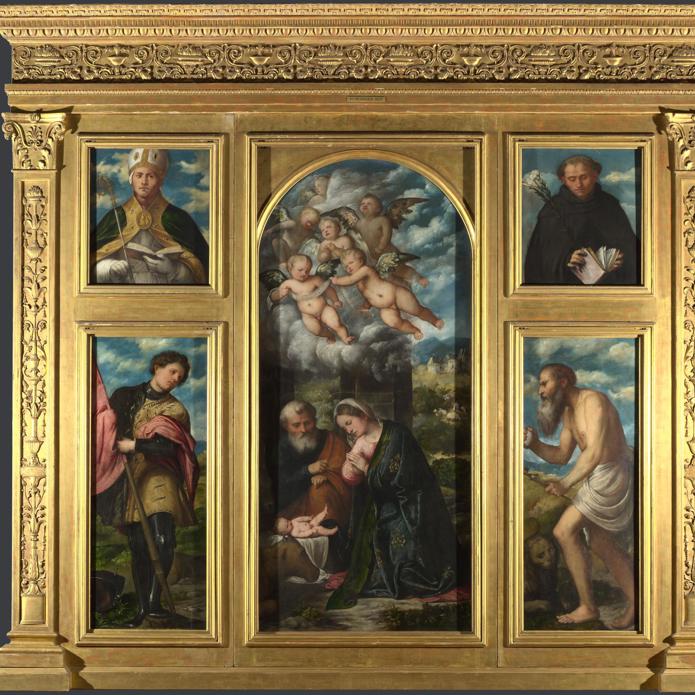
Overview
Romanino made this painting for the high altar of Sant' Alessandro in Brescia. It may have been commissioned by the Confraternity of Corpus Christi – a lay brotherhood which venerated the body of Christ – who were responsible for the high altar.
The central panel shows the Nativity, with Mary and Joseph kneeling before the infant Christ. On either side, panels depict Saint Alexander (lower left) and Saint Jerome (lower right). Above them are Saint Gaudioso (upper left) and Saint Filippo Benizzi (upper right.)
The painting originally had a crowning panel of the dead Saviour supported by the Virgin and Saint John. It also had large canvas shutters to protect it – The Annunciation was painted on the outside of the shutters, and on the inside was The Adoration of the Magi. The elaborate frame of the altarpiece, made by the woodcarver Stefano Lamberti, which would have formed a fundamental part of it, is now missing.

